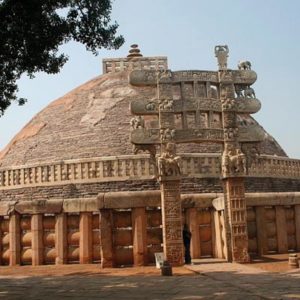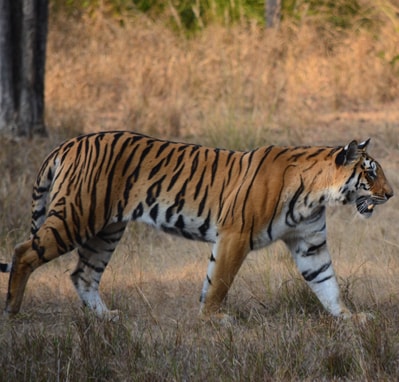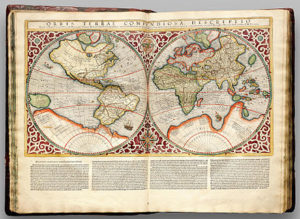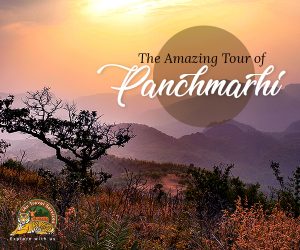Madhya Pradesh can be said to be the microcosm of India, for the land reflects the glory of India in many ways. These can relate to the architectural grandeur of its palaces, temples and mosques, the natural beauty surrounding the Vindhyas and other regions, the prehistoric art at places like Bhimbetka, the pilgrimage centres of Amarkantak, Chitrakoot and others, and the adventure trail of the tiger sanctuaries to name a few. For those with a spiritual bent of mind and in the quest for peace and tranquility, the land of Sanchi can be an added attraction in the Madhya Pradesh tourism circuit.

Madhya Pradesh, the Heart of Incredible India, is a tourists dream destination.
The historic and ancient monuments and sites, the national parks, the temples and the leisure destinations are always interesting for a traveler.
However, there are a lot of things to know about this beautiful Indian state.
To introduce you to a few of them, here’s are some lesser known interesting facts about Madhya Pradesh you may not know. Find out how Madhya Pradesh is different from other states.




From the inspiring love legends of Mandu to the formidable regality of Gwalior,
from the civilization testimonies of Bhimbetka to the architectural eroticism of Khajuraho, from the spiritual mysticism of Omkareshwar and Chitrakoot to the unblemished biodiversity of the national parks at Kanha and Bandhavgarh,
Madhya Pradesh is a microcosm of “Incredible India”.
Centre of India

The Geographical Centre of India lies in Madhya Pradesh at coordinate 24° 7’11”N and 77° 41’49”E, making the village of Karondhi, near Jabalpur, the most central spot in India

Sanchi Stupas
The Great Stupa at Sanchi, built by Emperor Ashoka in the 3rd century BC, is the oldest stone structure in India
Sanchi is a UNESCO World Heritage site. It was lost to the world for almost 600 years from around the 13th century up to 1818, when a British official named General Taylor rediscovered it. The group of 50 remaining monuments – temples, monasteries and pillars – had been forgotten and left undisturbed during all this time.

Maheshwar
Madhya Pradesh’s renowned Maheshwari saris owe both their inception and later revival to the Holkar family. It was in the 18th century that Rani Ahilya Bai Holkar invited weavers from Surat to Maheshwar to procure the distinctive textiles. In the mid-1970s, the handloom industry was in a state of decline. Richard Holkar, a descendant of Rani Ahilyabai, and his wife Sally, founded the Rehwa society in 1979 to help revive the craft.

gwalior
Taken by its imposing structure and splendor, Mughal Emperor Babar described the Gwalior Fort as the “Pearl amongst the fortresses of Hind”.
Gwalior is named after a sage named Gwalipa, who in the 8th century A.D. is said to have cute Raja Suraj Sen from leprosy by giving him healing waters. The hill fort was also known as Gopa Parvat, Gopachal Durg and Gopadiri.

Bhopal
Bhopal is known as the city of lakes and derives its name from its earlier name, Bhoj Pal. It is named after the 11th century king Raja Bhoj who cost constructed the Bada Talab ( Upper Lake ).
Bhopal was ruled by four women in succession between 1819 and 1926, who are credited with giving the city its waterworks, railways, postal system and a municipality (constituted in 1907). They were Qudsia Begum (1819 to 1837), who in turn was succeeded by her only daughter Shah Jehan Behum (1868 to 1901). Her daughter Kaikhusrau Jehan Begum ruled from 1901 to 1926.
The 1982 discovery of a nearly complete skull of an advanced Homo Erectus in Hathnora village in the Narmada valley indicates that the area had been inhabited since the middle Pleistocene era ( 5,00,000 years ago ).

The Legendary rulers
Several great women rulers have reigned over parts of Madhya Pradesh over the centuries, including the Gond queen Rani Durgavati (16th century) and Rani Ahilyabai Holkar of Indore (1767-1795).

Pench Tiger Reserve
The lush landscape of Pench National Park and the town of Seoni provided the setting of the Rudyard Kipling’s The Jungle book.
In 2010, Madhya Pradesh government adopted the Hindi song “Sukh ka Daata Sab ka Saathi” as its state anthem. The song has been penned by veteran journalist Mahesh Shrivastava and sung by noted Bollywood playback singer Shaan.

In his 4th century AD classic “Meghdootam”, poet and playwright Kalidasa pays homage to the ancient city of Ujjain with the lines :
Oh, fine Ujjain ! Gem to Avanti given,
Where village ancients tell their tales
Of mirth and romance.
Oh, radiant it of heaven !
Home of a blest celestial band whose worth
Sufficed though fallen from heaven,
To bring down heaven on earth.
In all, he dedicated 12 verses of the poem to give a vivid description of Ujjain and it’s people.
Ujjain
Since the 4th century BC, Ujjain has marked the first Meridian or Prime Meridian of longitude for Hindu geographers. Ujjain was known to ancient Greeks as Ozene. The name finds mention in Ptolemy’s Geographia (2ndcentury AD) and the Periplus of the Erythraean Sea (1st century AD) as the capital of the western Satraps – the Indo-Scythian rulers of the western and central India.
Ujjain finds mention in one of the oldest continuously inhabited city’s in the world, having having existed since 800 BC. It is also one of the four city’s in India along with Haridwar Allahabad and Nashik that hosts the Kumbh Mela – the largest peaceful Hindu religious gathering in the world – once every 12 years.

The Forests
Madhya Pradesh verdant forests contain a treasury of herbs and medicinal plants such as Plantago Ovata (Isabgol / Psyllium), Cyperus Rotundus (Nagarmotha / Nut Grass) and Rauwolfia Serpentine (Sarpagandha / Indian Snakeroot)and provide as much as 40% of the country’s total demand.
India’s only active diamond mine is the Majhgawan mine in Panna, Madhya Pradesh. It has an annual capacity of 84,000 carats.

Divine Bliss
The only hill station in Madhya Pradesh is the beautiful Pachmarhi, known more fondly as “Satpura ki Rani” for it’s location in the Satpura range. It is situated 1,100 meters above sea level.
Pachmarhi’s name derives from the hindi word Panch, meaning ‘five’ and ‘marhi’, meaning ‘caves’. It’s a reference to the five caves on a hilltop that, according to the legend, was built by Pandavas during their 14 year exile.

Wildlife
Bandhavgarh National Park covers 448 kms and boasts the highest density of royal Bengal Tigers in India. Prior to 1968, it served as the hunting preserve of the maharajas of Rewa. It was considered a good omen for the Maharajas to shoot 109 tigers ; Maharaja VenkatRaman Singh went steps further to kill 111.
A beautiful and graceful tigress named Sita, an inhabitant of Bandhavgarh National Park, is believed to have been the world’s most photographed tiger until her death in 1996. She even graced the cover of the National Geographic Magazine.

The Indigenous
Madhya Pradesh is home to 40% of India’s total tribal population. The largest tribe, the Gonds, inhabit areas on both sides of the Narmada as well as the Vindhya and Satpura regions. The Bhils, the second largest tribe, are concentrated around Jhabua, Khargone, Dhar and Ratlam. Baigas, Saharias, Bharias, Korkus and Santias are some other tribes.
Madhya Pradesh is a busy railway hub as the main rail route that links Northern India with Southern India passes through it. As many as 425 trains pass through the state every day, of which 220 pass through Bhopal, the capital alone.
WhatsApp us